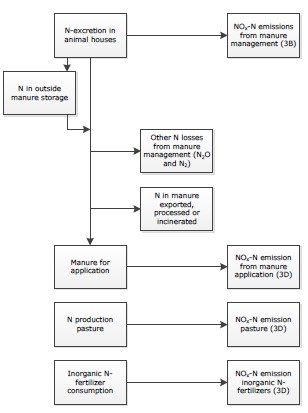File : D1.2
Author : Guido Pellis (CMCC) et al.
Science plays a crucial role in the UNFCCC framework, providing data and methods for GHG estimations and, in the view of the Paris Agreement (PA) implementation, serving as “benchmark” for assessing the collective achievement of the 2°C temperature goal, within the Global Stocktake process.
On the other hand, the emissions resulting from GHG inventories (GHGIs) provided by Parties under the UNFCCC and the results from the climate science may be not directly comparable as there are intrinsic differences in scope that should be carefully considered.
The aim of this deliverable is to explore issues linked to terminology and definition within each inventory sector to build a common understanding of the main differences that should lead to a common language to bridge the two communities.
The analysis involved directly the inventory agencies within VERIFY, showing that the main terminological issues are related to the Land Use, Land-Use Change and Forestry (LULUCF) sector while the other sectors have signaled issues that are more generally linked to different approaches in use between the GHGIs and the climate science such as: system boundaries, temporal and spatial scale, methodologies, emission attribution etc.
To create a common ground for science and inventory frameworks, the deliverable provides the key concepts, terms and approaches in use within the general UNFCCC reporting framework, with an overview of comparability issues between the climate science and GHGIs as reported by the Inventory agencies. The analysis of the terminology problems is provided in details for the LULUCF sector, which was the sector that mostly reported problems linked to the different terms in use. In addition, to increase the understanding of the inventory framework, the main inventory methods and approaches are reported for each sector, describing the main terms in use.
On the other hand, the emissions resulting from GHG inventories (GHGIs) provided by Parties under the UNFCCC and the results from the climate science may be not directly comparable as there are intrinsic differences in scope that should be carefully considered.
The aim of this deliverable is to explore issues linked to terminology and definition within each inventory sector to build a common understanding of the main differences that should lead to a common language to bridge the two communities.
The analysis involved directly the inventory agencies within VERIFY, showing that the main terminological issues are related to the Land Use, Land-Use Change and Forestry (LULUCF) sector while the other sectors have signaled issues that are more generally linked to different approaches in use between the GHGIs and the climate science such as: system boundaries, temporal and spatial scale, methodologies, emission attribution etc.
To create a common ground for science and inventory frameworks, the deliverable provides the key concepts, terms and approaches in use within the general UNFCCC reporting framework, with an overview of comparability issues between the climate science and GHGIs as reported by the Inventory agencies. The analysis of the terminology problems is provided in details for the LULUCF sector, which was the sector that mostly reported problems linked to the different terms in use. In addition, to increase the understanding of the inventory framework, the main inventory methods and approaches are reported for each sector, describing the main terms in use.

Figure 1 : Nitrogen flows in relation to NOx emissions
